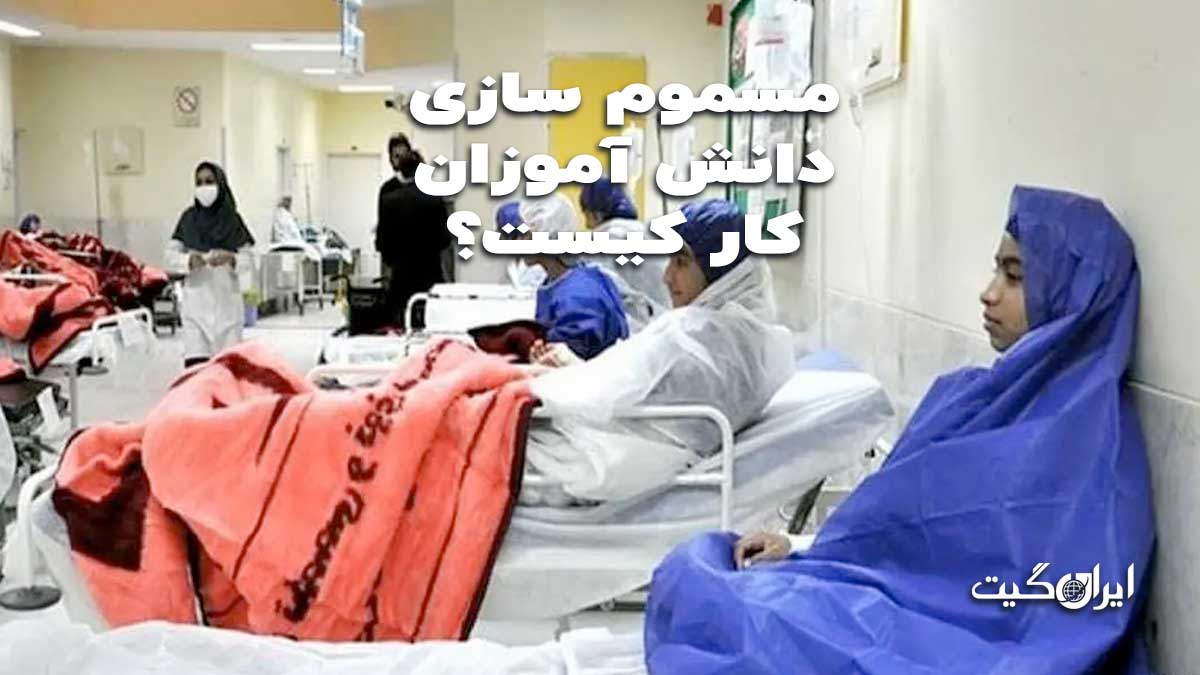Who is behind the poisoning of students? Part One
Who is behind the poisoning of students? According to Iran Gate, about five months have passed since the start of the serial poisonings of female students, yet there has been no news of the arrest of those responsible for this major crime by the relevant authorities. Meanwhile, the second wave of poisonings has begun in various provinces, causing concern among the parents of female students.
Seyed Ali Khamenei, the leader of the Islamic Republic, in a speech in March 2023, three months after the start of the systematic poisoning of girls, called these actions a crime and ordered a swift response to prevent their continuation. Following these remarks, the serial poisonings suddenly stopped in a significant way.
Of course, after a few days, schools naturally closed due to the coincidence with the Nowruz holidays. However, this calm before the storm did not last long, and after the end of the Nowruz holidays in 2023, a new wave of poisonings emerged. Now the question arises: who is behind these systematic actions, and why have the country’s law enforcement agencies been unable to prevent them so far?
To answer these questions, it is necessary to examine the developments surrounding this crisis and evaluate the connections between events. Iran Gate has addressed this issue in a three-part series, trying to reach a specific answer. This report, which is the first part of this series, reviews the developments in the early days of the systematic and widespread poisoning of female students.
When the 2000s generation becomes a target
As mentioned, it seems that December 9, 2022, marks the beginning of the series of poisonings of female students. A temporal and spatial examination of the start of these criminal actions will be very helpful in tracing their roots.
It should be noted that this event occurred at a time when the popular uprising known as ‘Woman, Life, Freedom’ was at its peak. This movement, which began in the last days of September 2022, created deep changes in the country’s political and social scene. As the slogan and name of this uprising suggest, the central focus of the nationwide protests was on women, specifically young and teenage girls, most of whom were born in the 2000s.
Images of girls removing their hijabs in classrooms of girls’ schools circulated on social media, and the low average age of detained protesters confirms the point that teenage girls played a prominent role in the first layer of the struggle.
However, the activities of teenage girls were not limited to removing hijabs in classrooms and taking down pictures of the leaders of the Islamic Republic. Reports indicate severe physical confrontations in some girls’ schools in various cities between students and some officials who tried to suppress protest movements in schools.
For example, on October 5, 2022, a clip was released showing students in a girls’ school expelling a senior education official from Alborz province and chanting sharp slogans against the leader of the Islamic Republic and compulsory hijab. This incident also fueled the fire of protests in girls’ schools and intensified the heated uprising of Iranian women.
Experts believe that the series of developments mentioned have made teenage girls a target, a target that was in the crosshairs of security forces and extremist religious groups, putting female students at risk.
All roads lead to Qom
As mentioned, December 9, 2022, is recognized as the starting point of this criminal series. On this day, one of the girls’ schools in the city of Qom witnessed an attack by an unknown group that used a type of toxic gas. Since that day, more than 65 schools in this city have been attacked by assailants, and hundreds of Qom’s female students have fallen victim to the project of poisoning teenage girls.
By comparing the statistics and figures published in the media today, it can be said that Qom was not only the starting point of these attacks but also the city with the most attacks. So far, about 240 girls’ schools across the country have been attacked by unknown groups, which means Qom accounts for more than 30% of these attacks. In fact, one-third of the schools attacked nationwide are girls’ schools in the city of Qom, which can help analysts evaluate the pattern of poisoning Iranian girls.
A series of articles related to this topic has been written in Iran Gate, accessible through the links below.
- You are currently reading Part One of ‘Who is behind the poisoning of students?’
- Iran’s Taliban behind the poisoning of girls – Part Two
- Raisi government’s balancing act in the serial poisoning case – Part Three
English
View this article in English

